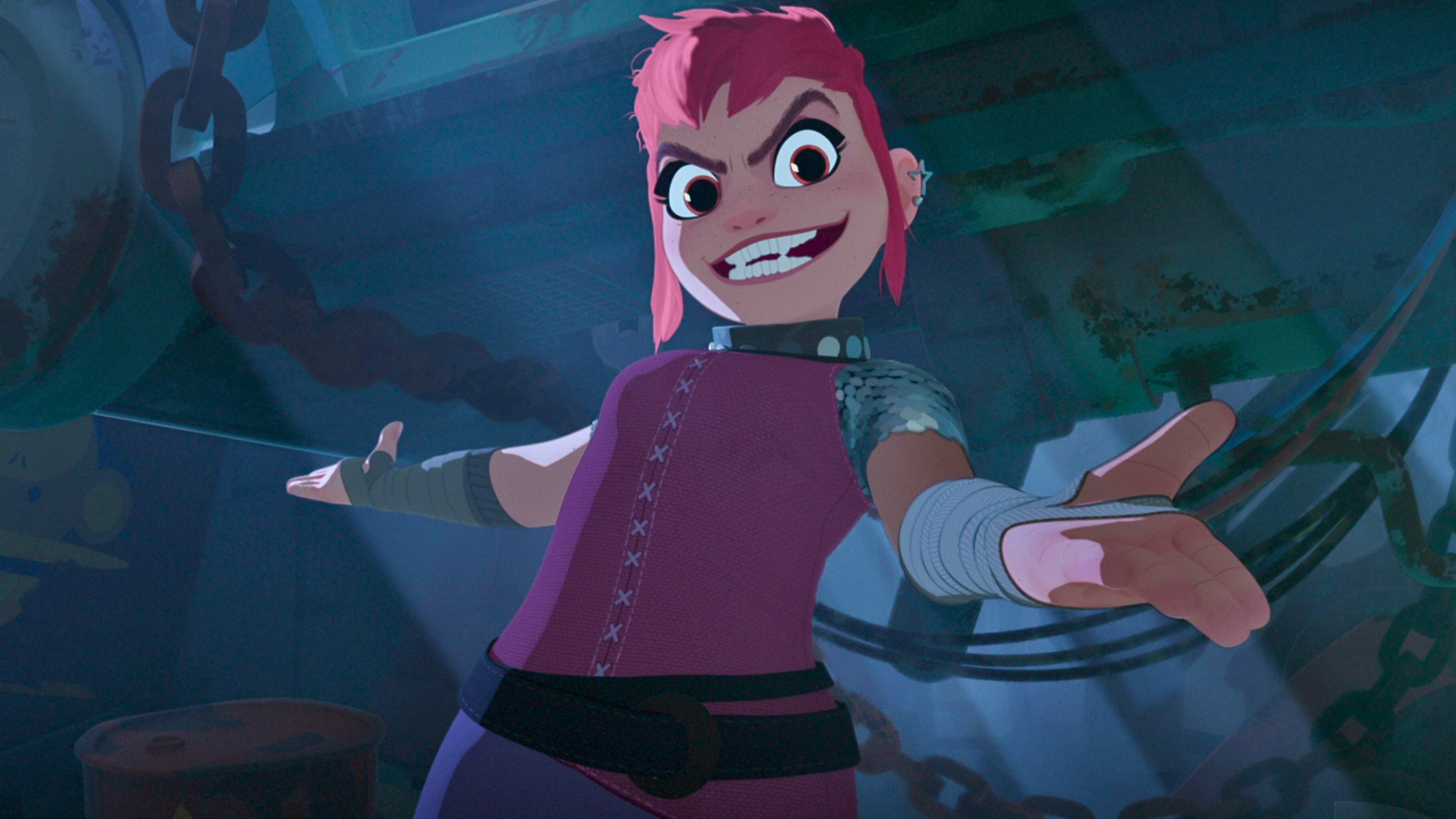How Netflix’s ‘Nimona’ Differs From the Graphic Novel

WARNING: spoilers ahead for Nimona, both the graphic novel and the Netflix movie.
Now that Nimona has finally hit Netflix, fans will get to see the beloved character created by ND Stevenson in an all-new light. In the original, award-winning webcomic-turned-graphic novel, Nimona is a teenage shapeshifter who becomes Sir Ballister’s sidekick. They help him pull off his evil plans and oust the Institution, which holds governance over the kingdom. Things are mostly the same in the animated movie, but there are some key differences.
Comparing and contrasting adaptations with their source material often leaves fans feeling disappointed or frustrated. But in some cases, it’s interesting to see how filmmakers altered the source material while still honoring it. Nimona may not be a scene-for-scene animation of Stevenson’s comic pages, but that’s okay. Read about some of the biggest differences between the movie and the graphic novel below.
Netflix’s Nimona has a much tighter timeline than the comic
While Nimona and Ballister meet several years after he’s disgraced in the graphic novel, things move much faster in the Netflix movie. Ballister is framed for killing Queen Valerin, loses his arm to Sir Ambrosius Goldenloin, then flees and builds a robotic prosthetic for himself in his hideout. Nimona shows up moments later after learning of the queen’s assassination and kickstarts an unlikely partnership with Ballister.
Similarly, the events of the Nimona movie take place over a few days, as opposed to several months as seen in the comic.
Sir Ballister’s origin story is different in the Nimona movie
In Stevenson’s graphic novel, Sir Ballister Boldheart—whose surname is Blackheart in the comic—doesn’t kill any queen, purposefully or accidentally. He’s betrayed by Sir Ambrosius Goldenloin in the final test of their training, a jousting competition that pits them against each other. Ballister knocks Ambrosius off his horse and Ambrosius uses a weaponized lance (like the sword in the movie) to take off Ballister’s arm. Ambrosius claims it was an accident, but Ballister doesn’t believe him.
Following the incident, Ballister leaves the Institution because he doesn’t believe they’ll have use for him as an amputee. He promptly becomes a villain—a real one, not an accused one—and swears to kill Ambrosius. This sets the pair on an intertwined path as nemeses and ex-lovers, with Ambrosius foiling every single one of Ballister’s acts of evil.
In the comic, Nimona enters Ballister’s life claiming she has been sent by the Agency, with whom Ballister places an ad for a sidekick. She’s lying, of course, but she doesn’t show up completely out of the blue as she does in the movie.
Nimona’s origin story is also different
In Netflix’s Nimona, the eponymous anti-hero is seemingly born a shapeshifter, or at the very least has been one for some time before befriending the historic knight Gloreth when she’s just a child. Nimona and Gloreth spend all of their time together, even after Nimona reveals her powers—until one day, the adults in Gloreth’s village see Nimona in an animal form and cast her out as a monster. Gloreth picks up her wooden sword and takes the side of the adults, forcing Nimona into heartbroken isolation.
In the comic, Nimona tells Ballister that she was transformed into a dragon to help a witch climb out of a ditch, but rather than turn Nimona back into a girl as she promised, the witch fled. Nimona returned to her village to show off her new powers, but everyone there saw her as just a monster. It took her a very long time to figure out that she could change shapes, let alone that she could change back into her human form. That’s all the information she gives Ballister, even though he asks for more.
Eugene Lee Yang’s Sir Goldenloin is much easier to love
In both Nimona the comic and Nimona the movie, Ambrosius and Ballister eventually join forces and get back together. However, in the movie, he’s much more likable—mainly because he has nothing to do with Ballister’s framing. He still cuts off Ballister’s arm, but that’s because Ballister is holding a weaponized sword and apparently just killed the queen. The stakes are a little steeper than just a joust.
(featured image: Netflix)
Have a tip we should know? tips@themarysue.com